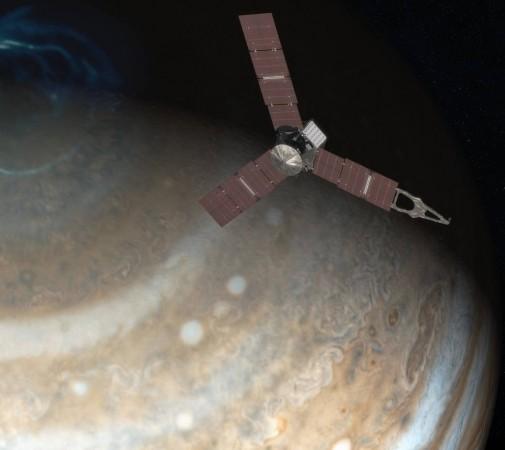
NASA's Juno spacecraft completed a year orbiting Jupiter on July 4 and provided the astronomers with an abundance of data about the gas giant.
Here's all you need to know about NASA's Juno mission:
- The $1.1 billion Juno mission was launched on August 5, 2011, and the spacecraft arrived at Jupiter on July 4, 2016, after completing a five-year journey.
- The main aim of NASA's Juno spacecraft was to study the origin and evolution of the gas-giant, as well as to measure the composition, presence of water in the planet and its mass distribution, gravity field, magnetic field and polar magnetosphere with the help of its seven different science instruments.
- The duration of Juno's orbit is 53.5 Earth days long and it is extremely elliptical. The perijove or closest approach of the spacecraft is around 3,400 km and its apojove or farthest distance is around 8 million km.
- A majority of the information about Jupiter has been accumulated by the spacecraft during its close approaches.
- Some amazing findings made by Juno are:
- Jupiter's core is partially dissolved.
- The Jovian auroras of the planet differ from that of Earth's.
- Earth-sized cyclones were spotted in Jupiter's atmosphere.
- Mysterious clouds and even multi-coloured clouds were also spotted in the planet's atmosphere.
- Lately, Jupiter has been found to be the oldest planet in our solar system.
6. The Juno mission is scheduled to end in February 2018 after the spacecraft completes 37 orbits of the gas giant.
7. The spacecraft will be flying over Jupiter's significant feature – the Great Red Spot (GRS) – which is a 16,000 km wide storm on July 10.

















